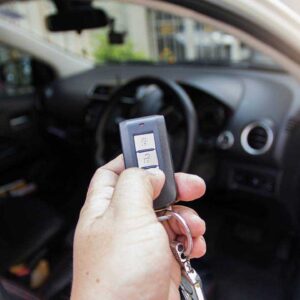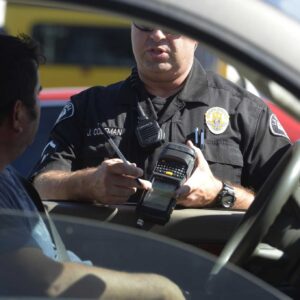Introduction
Ever wished your car could guard itself—and help your wallet too?
With car theft on the rise globally, it’s more important than ever to layer up security. Luckily, many DIY anti-theft upgrades are affordable and effective. Better yet, insurers love them—and some even slash premiums by up to 15% when you install approved devices . In this guide, we’ll walk through the top 10 DIY car anti-theft upgrades, ranked by ease, impact, and savings potential. You’ll learn how each upgrade works, average insurance discounts, and pro tips for installation—complete with user reviews and comparison tables for quick clarity.
Why DIY Anti-Theft Upgrades Matter
- Stealthy savings – Most insurers offer premium discounts for active/passive/trackable security devices—sometimes just for a basic alarm (mychoice.ca).
- Proactive defense – Visible deterrents alone can deter opportunistic thieves (thesun.co.uk).
- Tech-savvy traps – Fending off key fob hacking and immobilizing the engine cuts theft risk significantly (en.wikipedia.org).
- Recovery boosts – GPS trackers get stolen vehicles back fast, lowering state loss payouts (family1st.io).
Classification of Security Devices
Here’s a quick glance at the 3 main types insurers recognize:
| Type | Examples | Insurance Discount* | Functionality |
|---|---|---|---|
| Passive | VIN etching, window film, immobilizer | 3–7% | Always on, no activation needed |
| Active | Steering wheel lock, alarms, kill switches | 5–10% | Manually activated when leaving the car |
| Tracking | GPS trackers, recovery systems | Up to 15% | Helps recover your car after theft |
1. Faraday Signal Blocking (DIY Key Protection)
Why It Matters
Keyless fob theft—where thieves amplify your key’s signal to unlock the car—is on the rise (thesun.co.uk).
DIY Fix
Wrap your key in tin foil or use a DIY Faraday pouch/box to block the signal (thesun.co.uk).
Insurance & User Feedback
- RAC recommends metal-lined blockers over foil.
- Lancaster Insurance counts key signal blockers among risk-reducing tools.
- TikTok user Lucy Lewis popularized the tin-foil hack: “I can’t be the only one that goes to sleep with [the key] wrapped in tin foil” (thesun.co.uk).
2. Steering Wheel Locks
Why It Works
A visible, physical barrier that prevents steering—an obvious deterrent (gearjunkie.com).
Top Picks (budget to premium):
- The Club 3000 – Alloy-steel, twin-hook, self-locking. Often covered up to $500 compensation.
- Tevlaphee Steering Wheel Brake Lock – Locks wheel and brake pedal, hailed for sturdiness
Insurance & Savings
Often yields ~5–10% discount (mychoice.ca).
3. Kill Switch / Battery Disconnect
Purpose
Prevents engine start by killing essential circuits; hidden DIY versions are low-cost yet effective (thesun.co.uk).
DIY Execution
Use a remote-controlled battery disconnect (like FEITON or MAYCC) or traditional kill switch spliced into starter wiring (gearjunkie.com).
Insurance Perks
Often counted under active devices—eligible for discounts (mychoice.ca).
4. GPS Tracking & Recovery Systems
The Advantage
Track your car’s location in real time—critical when other layers fail (automoblog.com).
DIY Installation
Install aftermarket GPS trackers like CarLock, Vyncs, or Tag systems.
Insurance Impact
Tracking systems can yield up to 15% discounts (insurancenavy.com, mychoice.ca).
User Experience
Vyncs is noted for affordability; Tag boasts 99.82% theft prevention success .
5. VIN Etching & Data Dots
What It Does
VIN etched on glass makes reselling parts riskier for thieves (mychoice.ca).
Data dots are micro VIN spots hidden on parts for police ID (wired.com).
DIY Steps
BUY a DIY VIN-etching kit (~$20–25) or order DataDot microdot kits; apply sparingly.
Insurance Benefits
Up to 15% discount in some states (en.wikipedia.org). DataDots contributed to 60–95% reduction in certain models in Australia (wired.com).
6. Window Security Film
Function
Prevents glass from shattering—slows down smash-and-grab thieves (mychoice.ca).
DIY Application
Apply transparent film to interior glass; requires clean surface and careful measuring.
Insurance Insight
Often qualifies under passive devices: ~3–7% discount (mychoice.ca).
7. Wheel Lug Nut Locks / Rim Guards
Protection Offered
Prevents wheel theft through locking lug nuts that need a special key (mychoice.ca).
DIY Fit
Replace one lug nut per wheel, tighten securely.
Insurance & Reviews
Devices like RimGard are recognized by insurers and often discount-eligible (automoblog.com, mychoice.ca).
8. Under-Dash Lockboxes
Why Useful
Keep valuables like documents, money, or gadgets locked away in case of break-in .
DIY Tip
Select compact, bolt-in lockboxes and secure beneath the dashboard.
Insurance Relevance
Still primarily a theft-deterrent; might reduce risk, but discount depends on insurer .
9. Wireless Motion Sensor Alarms
Key Feature
Detect vibrations (door jolt, glass break), alarm triggers and smartphone alert .
DIY Installation
Stick-on sensors linked to hub or plug-in self-contained modules.
Insurance Effect
Treated as active deterrent—eligible for 5–10% discounts (mychoice.ca).
10. Hood & Engine Bay Locks
Security Role
Prevents hood tampering—protects battery, wiring, and fuse box (mychoice.ca).
DIY Guide
Buy a latch kit and bolt it underneath the hood; conceal lock face.
Insurance Notes
Often falls under active/passive combos—check insurer terms.
DIY Bundle Example & Insurance Savings
To maximize savings and security, combine multiple devices. Here’s a typical DIY bundle and anticipated annual savings (based on a $1,200 premium):
| Device | Category | Installed At-Cost | Est. Discount |
|---|---|---|---|
| Faraday key pouch | Passive | $15 | 3% |
| Steering wheel lock (The Club 3000) | Active | $55 | 5% |
| Kill switch (DIY install) | Active | $30 | 5% |
| GPS tracker (Vyncs) | Tracking | $80 + subscription | 10% |
| VIN etching kit | Passive | $25 | 3% |
| Window film + lug nut locks | Passive | $100 | 5% |
| Total | $305+subs | 31% (~$372 savings) |
Note: discounts often stack up to a cap set by insurers; check with yours.
Real User Experience
From Reddit insurance threads, experiences vary:
“I was told they don’t offer discounts for anti‑theft type devices… only in certain states.” (gearjunkie.com, automoblog.com, en.wikipedia.org, mychoice.ca, reddit.com)
This underscores the importance of verifying with your insurer beforehand.
Pro Tips for DIY Installation
- Document Everything: Keep receipts, install photos, and product manuals—some insurers need proof.
- Check Device Approval: Not all anti‑theft systems qualify—some insurers publish approved lists (insurancenavy.com).
- Layer Your Security: Insurance favors multi-layered defense .
- Keep Up With Maintenance: Test your alarm, locks, and tracker monthly.
- Understand Your Policy: Not all discounts apply per device; ask whether discounts stack or are cumulative.
Conclusion
Securing your car doesn’t have to drain your bank account. With strategic DIY anti-theft upgrades, you can build a multi-layered fortress—block signals, lock steering, kill ignition, track location, mark VINs—and potentially shave over 30% off your insurance premiums.
While every insurer and region is different, the consistent message from expert sources is clear: visible deterrents + tech solutions = lower risk + lower premiums .
Now it’s your turn. Put together a smart DIY bundle that fits your car and budget. Then call your insurer, tell them what you’ve done—and watch your next premium drop.
Quick Recap: Top 10 DIY Car Anti-Theft Upgrades
- Faraday Signal Blocker – foiled key fob!
- Steering Wheel Lock – durable & visible.
- Kill Switch – silent engine blocker.
- GPS Tracker – real-time recovery tool.
- VIN Etching / Data Dots – resale deterrent.
- Window Film – smash-proof glass.
- Wheel Lug Nut Locks – rim theft shield.
- Under-Dash Lockbox – protect valuables.
- Motion Sensor Alarm – vibration alerts.
- Hood Locks – safeguard engine bay.
With this foundation, you’re well on your way to becoming a security-savvy DIYer—and paying less for car insurance. Safe driving—and even safer parking!






